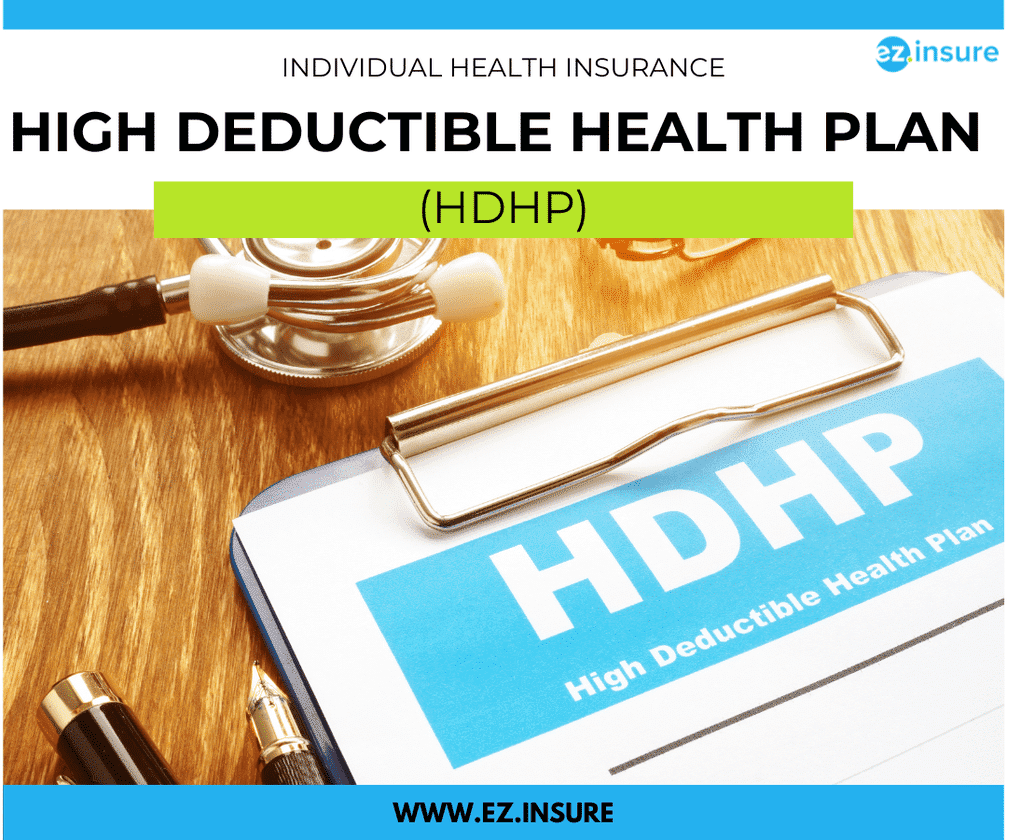Jump To:
-
What is a High Deductible Health Plan (HDHP)?
-
How Do High Deductible Health Plans Work?
-
What are the Deductible and Out-of-Pocket Maximum Limits for HDHPs?
-
How Much Do HDHPs Cost on Average?
-
What Medical Costs Are Covered Under an HDHP?
-
Why Are HDHPs a Great Option?
-
Who Should Consider Getting an HDHP?
-
FAQs
-
Explore Your Health Insurance Options Today
What is a High Deductible Health Plan (HDHP)?
A High Deductible Health Plan, also known as an HDHP, is a specialized type of health insurance plan that offers lower monthly premiums compared to a traditional plan, but comes with higher out-of-pocket costs before the coverage kicks in. HDHPs were created to help individuals and groups cut costs on their healthcare plans, while still gaining essential healthcare benefits.
Another unique aspect of an HDHP is that they qualify for and are usually paired with a Health Savings Account (HSA). While HDHPs come with higher deductibles compared to typical health plans, HSAs complement them perfectly by allowing individuals to set aside tax-free money to cover these out-of-pocket medical expenses.
How Do High Deductible Health Plans Work?
Deductibles and Premiums
When using an HDHP, policyholders have to pay a specified amount of money out-of-pocket before their insurance starts covering health costs. This specified amount is called a deductible.
Deductibles are not unique to HDHPs. In fact, the majority of traditional health insurance plans have deductibles that must be met prior to insurance coverage kicking in. The difference is that with an HDHP, deductibles are higher than traditional health plans, but on the flip side, monthly premiums are generally lower. With all that being said, HDHPs still cover a large portion of eligible medical expenses once that deductible is met.
Health Savings Account (HSA)
HDHP recipients qualify for HSAs, which help to alleviate the costs of qualified medical expenses. They work by allowing individuals to contribute pre-tax dollars to their HSA, which can be used for costs such as deductibles, copayments, coinsurance and much more. Another great aspect of HSAs is that they can earn interest, unused funds can roll over year to year, and people can keep their HSA funds even after retiring, or losing coverage.
Coinsurance
HDHPs also come with something called coinsurance. Coinsurance is simply the percentage of money that patients are responsible for paying themselves for covered healthcare services after meeting their plans deductible. The remaining portion of costs are paid by the insurance company. For example, if coinsurance for a plan is 20%, once the deductible is met, going forward patients would have to pay 20% of covered medical costs, while the insurer would pay for the remaining 80%.
Out-of-Pocket Maximums
HDHPs, like traditional health plans, also have specified out-of-pocket maximums. An out-of-pocket maximum refers to the total amount of money that people must pay for covered services in a year. Once this maximum limit is reached, coinsurance will go away, and the insurance plan will cover 100% of eligible costs.
What Are the Deductible and Out-of-Pocket Maximum Limits for HDHPs?
HDHPs have yearly limits that are set by the IRS for deductibles and out-of-pocket maximums.
- For 2025 the minimum deductible for an HDHP is $1,650 for individuals and $3,300 for families.
- For an HDHP in 2025, the maximum out-of-pocket limit is $8,300 for individuals and $16,600 for family coverage.
When implementing a company HDHP, it’s important to stay up-to-date with these limits as the IRS updates them every year.
How Much Do HDHPs Cost on Average?
The Average cost of a High Deductible Health Plan is around $8,217 per year for individuals, and about $22,404 for families. Like all health plans though, there are a number of factors that make the total costs vary including:
- Deductible Amount: In general, the higher your plan’s deductible is, the lower the monthly premiums will cost.
- Demographics: Older people or individuals with a history of high healthcare claims usually have increased premiums, compared to younger, healthy individuals.
- Dependents: In most cases, the more dependents that are added to a plan, the higher the plan’s cost will be.
- Location: State regulations tend to affect the cost of healthcare in particular areas.
- Plan Provider: Some insurers may be able to offer cheaper rates for similar coverage levels.
To get a more accurate understanding of what an HDHP will cost for you, just click below and get your free, customized quote!
What Medical Costs Are Covered Under an HDHP?
HDHPs offer the same essential health benefits that are included in traditional healthcare plans such as:
- Doctors visits
- Hospital stays
- Emergency care
- Prescription medications
- Preventive care (vaccines, flu shots, screenings, testing, etc.)
- Mental health services
- Chiropractic care
- Dental treatment (if included)
- Eye care (if included)
Why Are HDHPs a Great Option?
Let’s face the facts—we all want comprehensive health benefits, but at what cost? HDHPs help to bridge this gap between top-tier coverage and affordability. When using an HDHP you can reap the following benefits:
- Lower Premium Costs: Since deductibles are higher than typical insurance plans, premiums are lower, making them a budget-friendly option for individuals who don’t have frequent medical needs.
- Tax-Free Money for Healthcare Costs: Since HDHPs are generally paired with HSAs, individuals are encouraged to put away money for future healthcare costs, and the money isn’t taxed.
- More Flexibility: Individuals have the freedom and flexibility to use their HSA money for qualified healthcare services and costs of their choosing.
Who Should Consider Getting an HDHP?
While HDHPs aren’t the best option for every person, they might be a good choice for you if:
- You’re looking to lower the costs of monthly premiums.
- You are young, generally healthy or don’t visit the doctor too frequently.
- You want to take advantage of an HSA.
- You’d rather pay less in premium costs, as opposed to having a lower deductible.
FAQs
What is the downside of an HDHP?
The main downside of HDHPs is that they come with higher out-of-pocket costs (deductibles) compared to traditional health plans. Because of this, they may not be the best option for individuals in need of intensive or regular medical treatments, since costs could get high if medical services are needed before the deductible is met.
Do HDHPs cover preventative care even if I haven’t met my deductible?
Yes. Under the Affordable Car Act (ACA), preventative care which includes services like regular check-ups, vaccines and screenings are all 100% covered, even if your deductible has not been met.
Can I have an HSA with another type of health insurance plan?
No. Only individuals or groups with HDHPs are eligible for Health Savings Accounts. If you switch to a traditional health plan, you won’t be able to contribute to your HSA anymore, but you can use the remaining funds for qualified healthcare expenses.
Is it better to have a PPO or an HDHP?
Whether a PPO or HDHP is better for you depends on a multitude of factors, but mainly, the state of your health. In general, HDHPs are a great option for individuals and groups who are generally healthy, young, or have very few overall health concerns. On the other hand, for people with significant health conditions, and need more regular medical attention, PPOs or another traditional plan may be a better fit since they have lower deductibles.
Get an HDHP Today with EZ.Insure
If traditional health insurance plans don’t seem like the best fit for you, an HDHP could be exactly what you’re looking for. With low monthly premiums, and a tax advantaged savings account for health expenses, HDHPs are the perfect mix between flexibility and affordability. Don’t go uninsured any longer, instead, visit EZ.Insure for your free quote today!
To get started, simply click the below or give us a call at (209)-593-6584.







